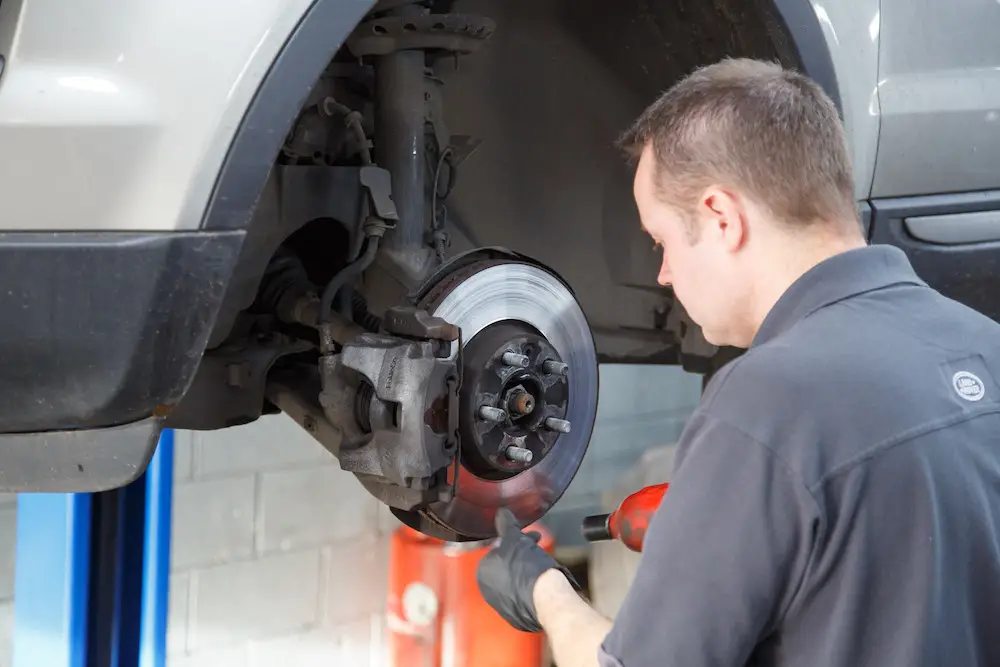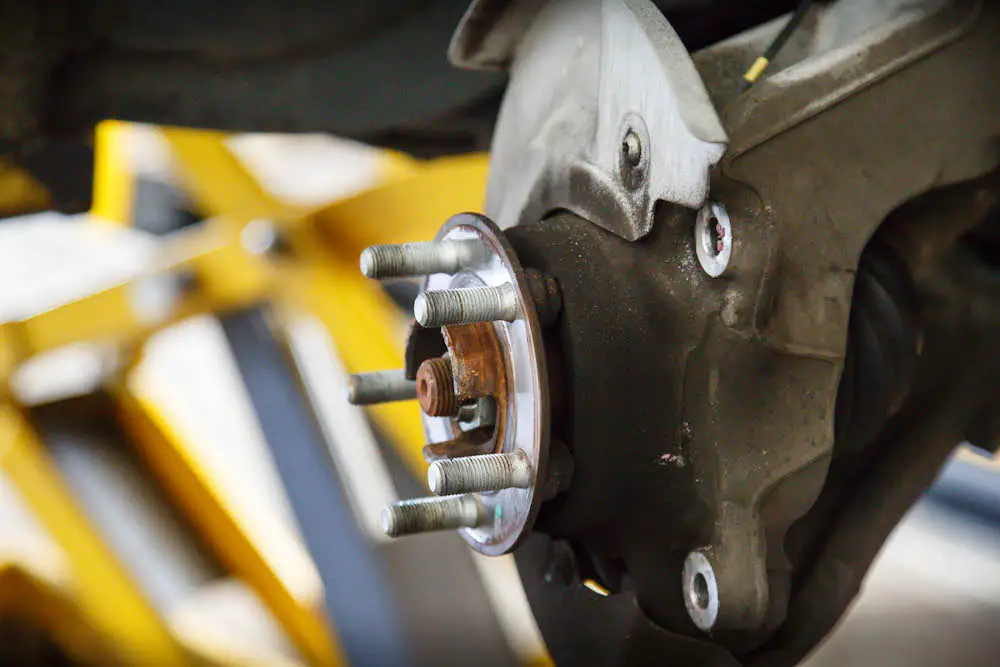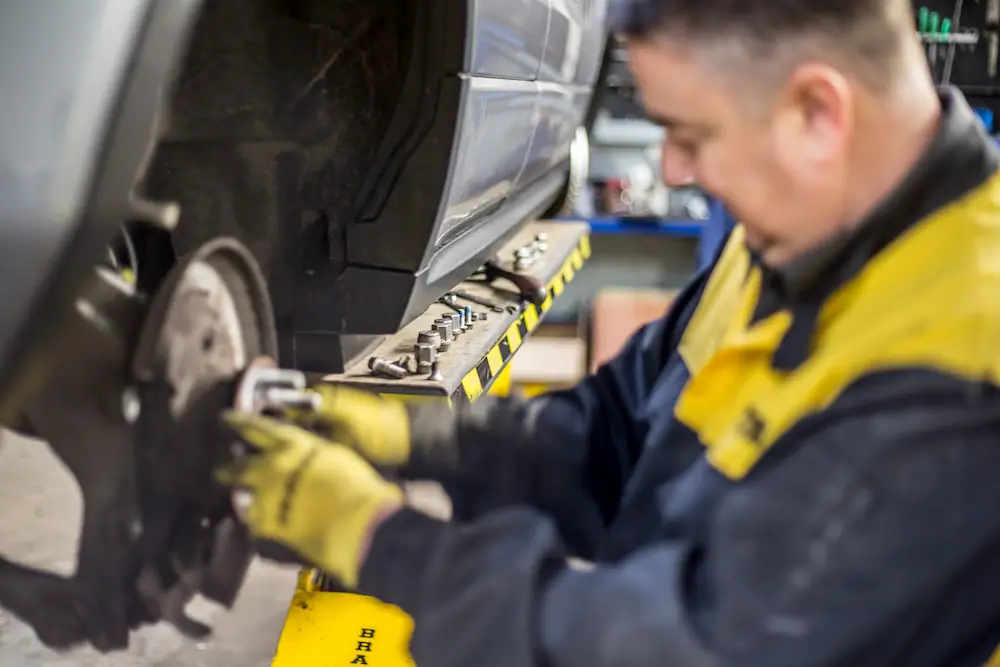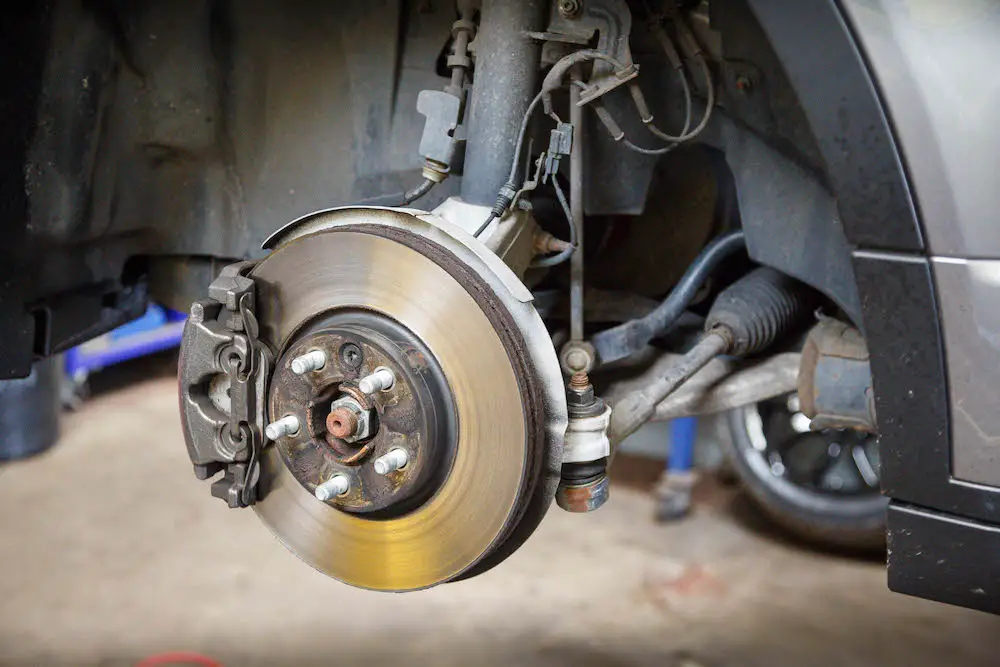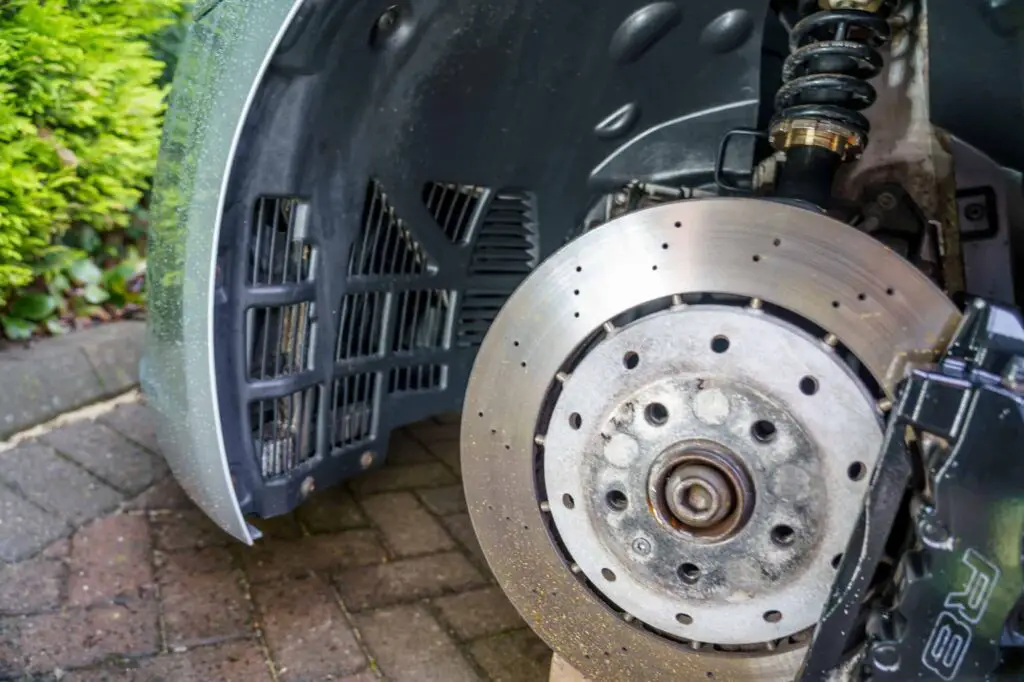The steering and suspension systems on your car depend heavily on the wheel bearings. The wheels’ ability to remain fixed to the vehicle is due to their wheel bearings. Each wheel can spin freely and with the desired pace thanks to them. But how long does it take to replace wheel bearing?
Wheel bearings endure constant abuse. While navigating bumpy roads, as well as other challenging terrain, they sustain the entire weight of your car. Wheel bearings are among the components of the steering and suspension system that survive the longest, but this mostly relies on the driver, the road, and other variables.
A worn-out or damaged wheel bearing can impair the wheel’s capacity to rotate securely, independently, and smoothly. This must be addressed right away because it can result in risky driving situations.
Some wheel bearings come with speed sensors or ABS. The ABS system’s performance could be compromised by worn-out or damaged bearings, which would compromise vehicle safety even further.
Over time, a damaged wheel bearing can affect the alignment of the car, leading to more problems with the tires as well as other suspension components.
- Wheel Bearing
- Wheel Bearing Replacement
- Bad Wheel Bearing
- Wheel Bearing Sound
- Frequently Asked Questions
Wheel Bearing
Any vehicle’s powertrain largely depends on the wheel bearings since they function as the initial link between both the moving and stationary parts of the car.
In its most basic form, a bearing is a friction-reduction tool inserted inside of something such as a wheel to improve rotational efficiency. This is made possible by the fact that rolling generates far less friction than sliding.
This is accomplished by the wheel bearing of a car, which rolls two thin rings of metal between tiny metal balls. The bearing and wheel revolve simultaneously with lubrication enabling the wheel hub to spin as much as possible due to the rolling balls in the bearing.
The hub assembly houses the wheel bearing, which establishes the stable connection via the hub carrier via an outer ring, or “racer.”
The driveshaft enters the wheel bearing via the inner ring as it leaves the transmission, forming the rotational partnership as it does so. The wheels of the car typically employ roller bearings, whereas the undriven wheels often use tapered bearings.
An assembly for a hub that makes use of tapered roller bearings. In a somewhat different way than a ball bearing, tapered roller bearings utilize lateral rollers which taper along with the spindle on which the bearing is installed.
They tend to wear down with time, just like any mechanical parts on the car that spin, rub, and roll. A steady drone or hum coming from the wheel that is damaged at different speeds is another telltale symptom that a wheel bearing has reached the end of its useful life. A problematic bearing can have one of three common causes:
- Poor installation-related incorrect alignment
- A leaking or broken bearing seal
- A side contact that causes an interior collision.
Wheel Bearing Replacement Cost
Like many repairs, the price of a wheel bearing replacement and how long does it take to replace wheel bearing will depend on the brand and model of your vehicle. A wheel bearing replacement at the dealership will also cost a little more. Probably a lot more.
Average Cost To Replace A Wheel Bearing
We searched the internet for the costs of a new wheel bearing. The findings’ overall average ranged from $300 to $500.
This is not the price of the part; rather, it is the fee for the mechanic to make it happen. It is preferable to conduct an online search for part pricing using your precise year, make, as well as model. or get in touch with a nearby car parts retailer.
They might be able to offer some helpful advice regarding the piece you require and whether or not it is an assembly. If you decide to handle the task yourself, you will then be better prepared for what to expect.
So, how long does it take to replace wheel bearing? Keep in mind that a wheel bearing is most frequently not replaced in pairs. Instead, only the ones (s) that were found to be defective were replaced. Normal sensor alignment and pricey sensor adjustments are not necessary during a wheel bearing repair.
After how long does it take to replace wheel bearing, it’s hardly the end of the universe to learn you need to replace a wheel bearing. It costs slightly more than having brakes installed at one side of the car but significantly less than certain other costlier repairs.
Our advice is to choose a reputable neighborhood mechanic and, if you are informed that you will soon require a wheel bearing, complete the work sooner rather than later.
Wheel Bearing Replacement
Potholes, pollution, and curb accidents. The major issues are those. In a sterile test facility, wheel bearings can spin endlessly with a typical load for virtually ever.
In a test lab, you don’t travel on actual roadways. Your surroundings are full of water, salt, and holes that frequently slam your car’s wheels. The wheel bearing may experience excessive stress if you strike a curb or even a pothole at an unusual angle.
According to a general rule of thumb employed by some mechanics, if you hit anything hard enough to crack a rim, you have also damaged the wheel bearing and thus will soon need to replace it. This will mean also finding out how long does it take to replace wheel bearing. Finding this out will often require some time. The impact squishes or dings the internal components, and they worsen by rotating for a while, pressing those flaws into flat places.
What About Electric Cars – Do They Need Wheel Bearings
Each vehicle has a component called a wheel bearing. When it concerns wheel bearings, having an EV is not advantageous. In actuality, EVs typically weigh more than regular cars in their niche. That is bad news for the rotating and supporting sections that are beneath the vehicle.
Bad Wheel Bearing Symptoms
Driving can occasionally reveal a worn wheel bearing. There will be an increase in noise inside the car. You’ll begin to hear a hum of sorts. like the sound of winter tires. If a mechanic test drives your car, they can comment, that the right front bearing is getting loud, for example. A poor wheel bearing may feel crunchy, nasty, roaring, and loose.
A mechanic may occasionally raise your car and rotate a wheel to check the ease with which it spins. A skilled mechanic can tell whether the wheel bearing is bad based on how freely it turns.
Another method of assessment is to make a comparison to the wheel on the other side of the vehicle. When you spin a wheel on a lift, you can occasionally hear the wheel bearing growing. They are nearly always correct.
After a test drive, they might guess one but discover that there are two that need to be replaced.
The most obvious and typical aural sign of damaged wheel bearings is present. It can nevertheless be perplexing. For instance, other problems like worn tires or a bad CV joint may be the cause of a humming noise.
1. Squeaking And Growling
Wheel bearings that frequently wear out make squealing or snarling noises. As the vehicle’s speed rises, the noise becomes more intense. Try to locate the source of the noise as this will show you where the damaged wheel bearings are.
2. Clicking Noise
There might be an issue with the wheel hub assembly if you hear a clicking noise that gets louder as the car speeds up.
3. Wheel Sway
By hoisting the car, technicians can manually look for wheel movement to check for wheel wobble. It wouldn’t be feasible to move the wheel or tire normally. If it does move, though, the hub assembly needs immediate replacement. If the problem is not fixed, the tire or wheel could conceivably separate from the car at any moment and at any speed.
4. ABS Error
The warning light for the anti-lock brakes can come on. The wheel’s speed sensor is no longer functioning correctly if the tire, ring, and wheel wobble, and the ABS may act intermittently or not at all. For repairs, consult a pro.
5. Uneven Tire Wear
It may indicate worn wheel bearings if one tire degrades more quickly than the others. However, it could also be an indication of misalignment in the tires, the air pressure in the tires being too high or too low, or broken suspension parts.
6. Car Sways To One Side
When you apply the brakes, a car that has worn bearings may pull towards the left or right. The direction the car pulls indicates if the left or right sides of the vehicle have worn bearings. But this can also be an indication of brake caliper or brake rotor issues.
7. Vibration Of The Steering Wheel
Vibrations in the steering wheel might be a result of bad wheel bearings. As the speed of the car rises and the car makes a left or right turn, the intensity rises. However, the vibration might be due to a tire that isn’t fully round (perhaps with a flat patch) or is not balanced. Broken or worn suspension parts are another factor.
8. Steering Is Tight
Worn bearings may be to blame if the steering exhibits excessive play, which makes it appear less responsive and accurate than usual. Additionally, this can indicate that the car’s wheels need alignment. Visit a dealership service center or an auto repair shop if you experience any of the following symptoms.
Bad Wheel Bearing Sound
A faulty wheel bearing typically sounds like a grumbling or rumbling sound (the noise is mistaken often for worn tires). Additionally, a damaged bearing occasionally produces a grinding or screeching noise.
In either scenario, the intensity of the noise will match the direction of tire rotation. The sound will also become louder whenever you are turning in one direction or the other and may increase with the speed of the vehicle (though it may stop at a certain point).
What Causes Noise From Wheel Bearings
The wheel’s associated wheel bearings are in motion all the time. Since the wheels are in contact with the ground while driving, there may be several causes for the wheel bearing to make these odd noises or to deteriorate. You can find the top 5 causes of loud wheel bearings below.
1. Improper Installation
It would be quite odd if the wheel bearings were failing at any point after a recent change. The only obvious answer is that the wheel bearings somehow sustained damage due to incorrect installation or installation against the manufacturer’s advice.
2. Driving Through Deep Water
Engineers create wheel bearing seals in such a way that the pressure can escape the wheel bearings. The manufacturer fixes them using a lubricant made of petroleum. The only drawback is that water can still get through because of the lubricant.
This implies that your bearings were likely exposed to moisture if you drove your automobile along a street that was flooded with water. Once that occurs, it reacts with the lubrication and renders it useless, resulting in excessive friction that eventually leads to bearing damage.
An outdated wheel bearing would also be impossible to maintain or fix. You can only repair the water damage by entirely replacing the wheel bearing.
3. Driving On The Rough Roads
The wheel bearings take the entire weight of the car. The wheel bearing might readily sustain damage if you happen to drive over an uneven curb or pothole.
The balls of the bearing, which are inside the grooved ring where you hit something, will start exhibiting issues. The bearings will thereafter have a few minor flaws.
It will generate additional heat and friction as you keep driving the automobile with these damaged bearings. Small bits will soon start to fall off due to the heat, contaminating the wheel bearing’s oil and hastening its failure.
But, likely, the failure won’t become apparent for a few months.
4. Unbalanced Tires Or Bad Shocks
Your car’s wheel bearing, tire, lower arm, lower joint, knuckle arm, as well as shock are all very essential components. When your tires are out of balance, other parts of the wheel will also take the brunt and this can damage some of the other components, which may result in the wheel bearing making noise.
5. Damage On Or Near The Wheel Area
Wheel bearings connect to all of the other components listed in the previous sentence and are continually in motion. Therefore, if the wheel region sustains damage in an accident, it is only logical that other parts including the wheel bearing would probably also sustain damage and start to make noise.
Wheel Bearing And Hub Assembly
You rely on your car to steer precisely the way you want whenever you get in the driver’s seat, whether you’re securely negotiating a tight curve on a twisting country road or changing lanes on the interstate. Have you at some point considered how you can travel straight ahead, turn right, and left? You might be in shock to hear that a seemingly insignificant item like the wheel hub assembly plays a crucial role in the vehicle’s steering system.
What Is A Wheel Hub Assembly
This is a question that many first-timers who come across this term often wonder about. Fortunately, it is not one of those complicated parts and is simple to learn.
The wheel hub assembly comprises a component that includes seals, precision bearings, and sensors and is in charge of mounting the wheel to the vehicle. The wheel hub assembly, also known as a hub assembly, the wheel hub bearing, or the wheel hub unit, is an essential component of the car’s steering system that helps ensure proper steering as well as handling of your car.
Where Is It Located
The wheel hub assembly is located on every wheel, in between the driving axle as well as the discs and brake drums.
The wheel then fastens to the hub assembly’s bolts on the side facing the braking disc. Also, drive the axle’s side, and the wheel hub assembly will be either connect to or press into the steering knuckle.
You must first take off the wheel, followed by the caliper or brake rotor, to be able to view the hub assembly.
The majority of modern automobiles built after 1998 include a wheel hub assembly for every wheel. Whenever a hub assembly malfunctions, a fresh assembly will have to take its place. It is also helpful to find out how long it takes to replace the wheel bearing.
Before 1997, rear-wheel cars used two separate bearings as well as seals in both the front wheels, while front-wheel vehicles used hub assemblies at every wheel. You cannot service a hub assembly, but bearings can.
What Does A Hub Assembly Do
Firstly, the hub assembly will secure the wheel to your vehicle while offering free wheel spinning for secure steering.
Your traction control system and the ABS both depend on the wheel hub assembly (TCS). Hub assemblies also include the speed sensor for the wheels, which regulates the anti-lock braking system in your vehicle.
The sensor continuously transmits to the ABS control system the rate of rotation of each wheel. The technology uses the data to decide whether ABS should be in a heavy braking scenario.
The ABS sensors are also a part of your car’s traction control system. The TCS system and ABS system cooperate to help you in maintaining control of your vehicle and are a part of the ABS. Your traction control and anti-lock braking systems may be in jeopardy if this sensor malfunctions.
How Do I Know If I Have A Bad Wheel Hub Assembly
Various signs of a deteriorating wheel hub assembly include:
1. Growling Noises
When traveling at 30 to 45 mph, you may hear your tires humming, growling, chirping, squeaking, or humming.
2. Steering Wheel
While driving, the steering wheel can tremble.
3. ABS Warning Light
Whenever the sensor doesn’t read correctly or during a lost signal, the ABS light will illuminate.
What may occur if I drive when my wheel hub assembly sustains damage? This is often something that many drivers would love to know.
It is risky to drive with a damaged hub assembly. The wheels may stop smoothly spinning as bearings that are inside the unit deteriorate. Your car’s wheels may start to shake and become unsteady. Additionally, if the wheel hub assembly deteriorates, the steel may fracture and the wheel may dislodge.
Take your car to a dependable mechanic for repair if you think your wheel hub assembly is failing.
Find out more about high-quality steering and suspension components, locate your automobile part, or discover where to get your next auto part.
Frequently Asked Questions
What Is A Wheel Bearing
Wheel bearings are crucial parts of a car’s suspension, steering, and braking systems. The hub, ABS speed sensor, wheel bearings, and mounting flange are all included in the one-piece hub assembly, which is situated between the drive axle brake discs or drums. It is the element that enables a wheel to rotate.
What Does A Bad Wheel Bearing Sound Like
A faulty wheel bearing will typically make a cyclical chirping, squealing, or growling noise. If the sound fluctuates proportionally to the speed of the vehicle, this is another sign that it is caused by the wheel bearings. With each turn, the sound may increase worse or it may briefly stop.
How Much To Replace Wheel Bearing
The national average for replacing one wheel’s wheel bearings is roughly $350. But as you might expect, luxury brands are more expensive. Please note: You don’t always need to fix the bearings on the other wheel of the axle if that is the bearings at one wheel will need replacing. It differs from matching a set of tires.

